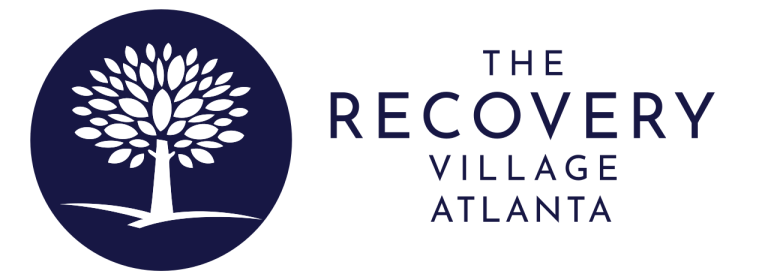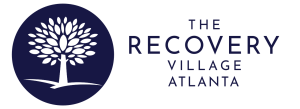Medication-assisted treatment (MAT) is an effective approach that allows people to recover from opioid and alcohol addiction and avoid relapse over the long term.
With rates of drug abuse on the rise and a surge in overdose deaths, addiction has become a leading public health issue for Georgia residents. Unfortunately, there is an unwarranted stigma associated with addiction, so it is important to understand that addiction is not a choice. Addiction is defined as a chronic disorder where there is a compulsive drive to seek out a drug despite negative consequences. It causes structural changes to the brain’s circuitry, making it extremely difficult to ignore that compulsion.
In the Atlanta area, opioid deaths more than doubled from 2010 to 2014. Additionally, an estimated 157,000 individuals in this region had an alcohol use disorder between 2012 and 2014. Fortunately, medication-assisted treatment (MAT) is a clinically effective tool that can be used to combat these problems.
MAT is FDA-approved to facilitate treatment for those addicted to opioids or alcohol. Among people with opioid addiction, it has been shown to decrease emergency room visits by 51%. The Recovery Village Atlanta is certified to administer MAT to anyone addicted to opioids or alcohol as medically appropriate.
What Is Medication-Assisted Treatment?
Medication-assisted treatment combines group and individual therapy with the use of certain medications to treat opioid or alcohol use disorder. This comprehensive approach is tailored to meet the varying needs of each individual.

It's time to get your life back.
Whether you are struggling with addiction, mental health or both, our expert team is here to guide you every step of the way. Don’t wait— reach out today to take the first step toward taking control of your life.
MAT serves a variety of functions, including minimizing withdrawal symptoms during drug or alcohol detox and controlling cravings. Certain medications can remove a substance’s ability to produce a high, while others can cause unwanted side effects to occur if someone uses a substance.
MAT for Opioid Addiction
Opioids are powerful drugs that include heroin, fentanyl and prescription pain medications like oxycodone, hydrocodone, morphine and codeine. They are so addictive that around 8% to 12% of people who use them for chronic pain will develop an opioid use disorder (OUD). In 2020, approximately 75% of overdose deaths involved an opioid.
One of the most effective ways to tackle the ongoing opioid crisis is through MAT, which combines medications and behavioral therapy to achieve the desired outcome. The drugs utilized with this therapy are safe and effective, and they can be used for months, years or even for life if necessary.
Opioid Addiction Medications
Buprenorphine
This drug works by reducing cravings for opioids. It is a partial opioid agonist, meaning it will still produce an opioid-like effect but is not as potent as full-opioid agonists. This gives buprenorphine the unique ability to provide a less powerful effect that levels off with higher dosing. It is available as an injection or sublingual tablet.
Methadone
Methadone is a full opioid agonist that is used for detoxification and maintenance therapy. It is especially effective in preventing opioid withdrawal symptoms, including fast heart rate, excessive sweating, nausea, vomiting and diarrhea. It has been shown to be more effective at preventing relapse when used over the long term instead of for short periods. It is important to keep in mind that methadone still poses a risk for abuse. It should only be administered under the direct supervision of a medical professional, preferably at an accredited rehabilitation facility.
Naltrexone
Naltrexone differs from methadone and buprenorphine because it does not stimulate opioid receptors; rather, it completely blocks them. As a result, if an individual is being treated with naltrexone and relapses, the effects of the opioid will not be felt.
MAT for Alcohol Addiction
Alcohol use disorder (AUD) is a growing problem. According to the 2019 National Survey on Drug Use and Health, 14.5 million people aged 12 or older were addicted to alcohol. In addition, the substance is the third-leading preventable cause of death in the United States. This is partly because alcohol is easier to access than other addictive substances, and drinking alcohol is considered less taboo than consuming drugs such as opioids.
MAT is an evidence-based tool that is highly effective for treating AUD. Medications combined with group and individual therapy can produce positive results for an individual struggling with AUD.
Alcohol Addiction Medication
Acamprosate
The exact way that acamprosate works is not fully clear, but it is believed to reduce cravings and decrease anxiety and insomnia. This medicine has a proven record of preventing relapse in multiple studies conducted worldwide; in one study, acamprosate improved the chances of avoiding alcohol use after detox by 15%. Acamprosate comes in a tablet form taken three times daily, and it is started five days after stopping alcohol use.
Disulfiram
Disulfiram works by inhibiting the enzyme ALDH1A1, and it can be used for both the short- and long-term treatment of AUD. It. If a person uses alcohol while taking the medication, they will experience unpleasant effects like palpitations, nausea, dizziness and sweating. In other words, it acts as a deterrent instead of working to suppress cravings. These deterrent effects may be experienced as soon as 10 minutes after drinking even a tiny amount of alcohol. Disulfiram is available as a tablet that is taken once daily. It must not be taken for at least 12 hours after drinking alcohol.
Naltrexone
For AUD, naltrexone works by blocking the pleasant feelings associated with alcohol consumption. This medication has been shown to lower the incidence of relapses and shorten relapses if they do occur. It is available in tablet form and as an intramuscular injection. The injection is credited with being more effective for alcohol use disorder.
How Much Does MAT Cost?
The cost of MAT will vary for each individual. Fortunately, many insurances will help cover MAT, particularly for opioid addiction. If someone does not have insurance or the treatment is not covered, the expense will depend on which medications are being used and the dose that is necessary to treat an individual.
The National Institutes of Health released an approximation of what MAT would cost with each medication treatment for opioid addiction. These rates include the cost of the drug and visits to the physician and does not consider any financial support or coverage:
- Methadone: $504 per month (assumes daily visits)
- Buprenorphine: $460 per month (assumes visits are twice weekly)
- Naltrexone: $1,176 per month (includes drug, drug administration and related services)
Is MAT Covered by Insurance?
MAT is typically covered by most insurances, either entirely or at least in part. If you have insurance, The Recovery Village Atlanta allows you to confidentially verify online or over the phone whether your insurance covers this treatment and to what extent. The online process simply requires you to fill out a quick verification form; once this is submitted, a representative from our team will contact you to review your insurance coverage.
MAT Treatment in Atlanta, GA
Medication-assisted treatment is one of the most effective tools used to help people recover from opioid and alcohol addiction. The Recovery Village Atlanta is an accredited rehabilitation facility that offers comprehensive MAT in an accepting and nurturing environment. Our team of empathetic and qualified health care professionals is here to help anyone struggling with opioid or alcohol addiction begin a healthier life in recovery. Contact us today to learn more about addiction treatment programs that can work well for your situation.








